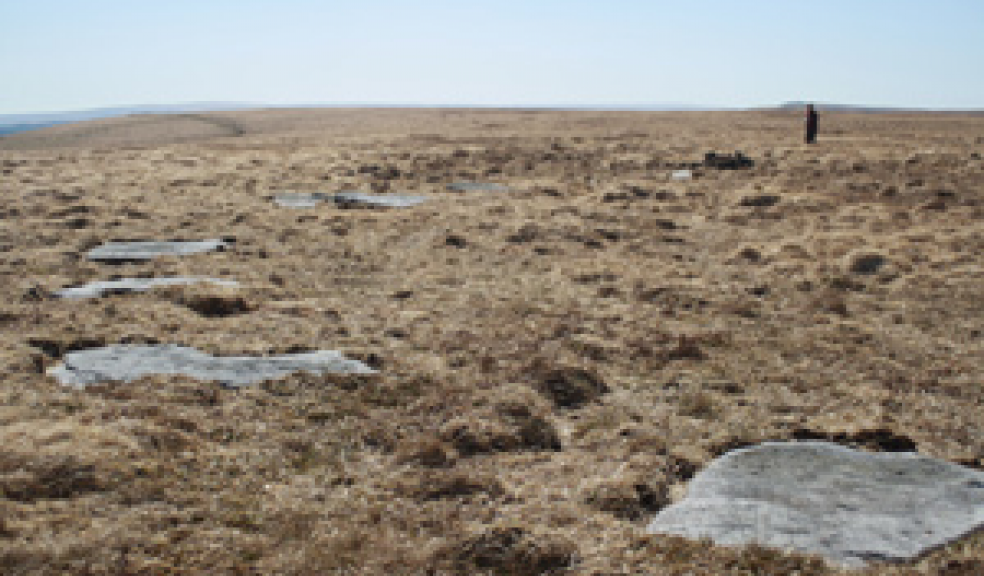
Newly discovered Dartmoor stone circle
The first stage of some exciting archaeological exploration has just been completed on Dartmoor. This has involved a geophysical survey on a recently discovered large stone circle located close to Sittaford Tor.
The circle is situated 525m above sea level, making it the highest stone circle in southern England, with panoramic views in all directions. With a diameter of 34m, it is the second largest circle on Dartmoor. The first stones were identified by Alan Endacott a few years ago.
The circle consists of 30 recumbent stones, plus one more lying in a gap just outside the circle and now incorporated into an unfinished enclosure wall. The stones probably came from Sittaford Tor itself and are of a fairly uniform size, suggesting they were carefully chosen.
Packing stones visible around the bases of some of these indicates that the stones were originally upright.
When upright the circle would have been very impressive, dominating the surrounding landscape and resembling in appearance the Grey Wethers double stone circle which lies close to Fernworthy Forest about 1km away.
This is the first stone circle to be discovered on the high moor for well over 100 years and it fits in well with the pattern of a “sacred” arc of similar stone circles, located around the north eastern perimeter of Dartmoor. This pattern suggests some kind of planning and liaison between the communities living on Dartmoor in the late Neolithic/early Bronze Age 5,000-4,000 years ago.
Jane Marchand, Senior Archaeologist, Dartmoor National Park said: "Its discovery is providing an opportunity for investigation using the very latest archaeological scientific methods to provide long awaited insights into the chronology, construction and the purpose of these most elusive and iconic of Dartmoor’s prehistoric monuments.
"Some preliminary radio carbon dating has already taken place on soil samples taken from directly beneath two of the stones.
"These are the first radiocarbon determinations from a Dartmoor stone circle. The dates have produced very similar results and calibrate to the end of the third millennium BC (4,000 years ago). This indicates the date by which the stones had fallen."
Although the full results of the geophysical surveys are not back yet, preliminary results have revealed a wide ditch running in a linear fashion just outside the eastern side of the circle. Further investigation is planned later this summer.
The geophysical work on this site has been funded by the Heritage Lottery Funded scheme, Moor than meets the eye which is helping people to discover the Dartmoor Story.













